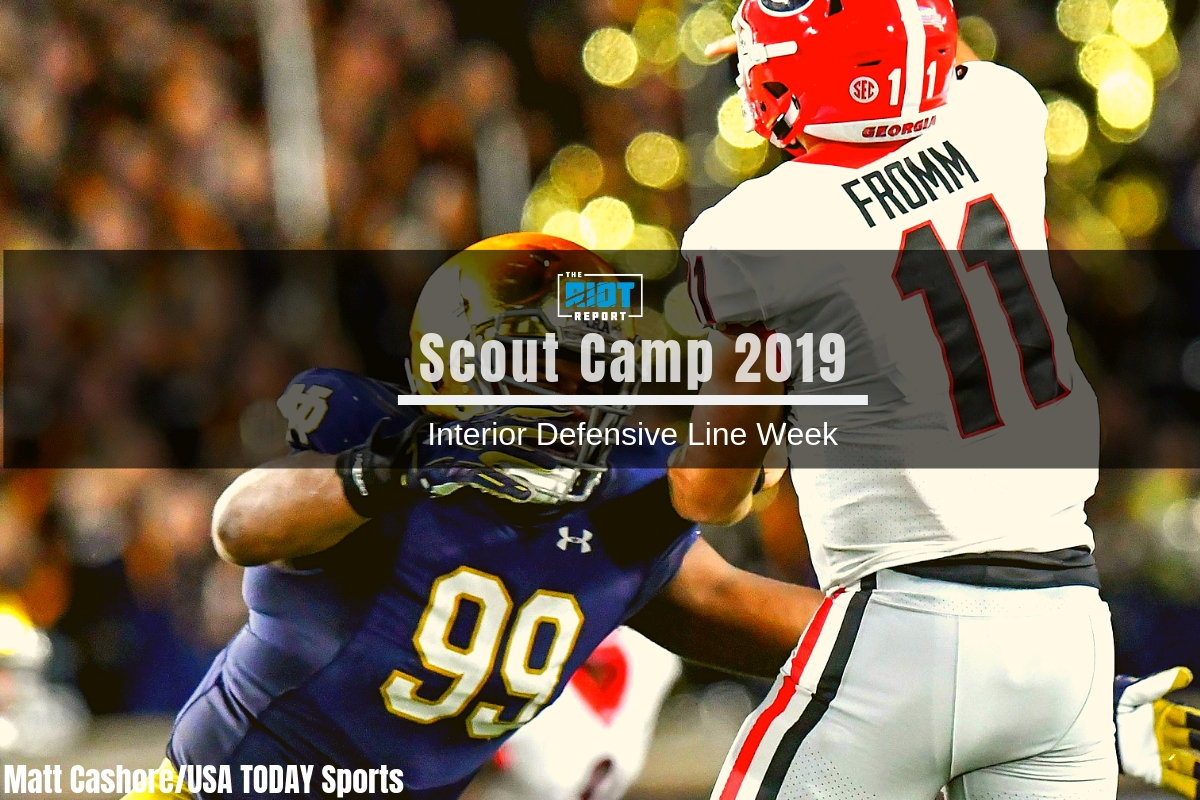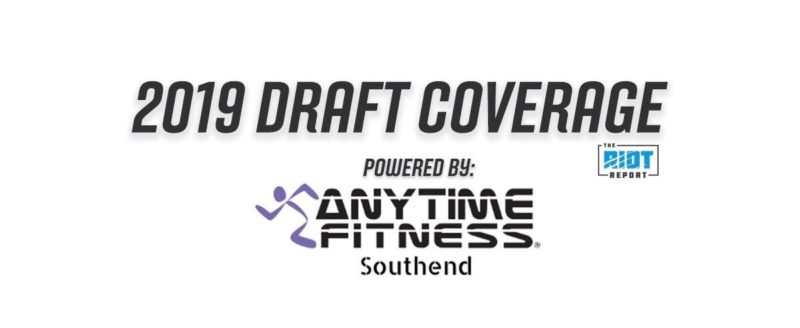The Panthers’ need on the interior of the defensive line is hard to tie down, as with the talk of playing more snaps out of a three-man front it is unclear how the Panthers’ existing players will fit in and, by extension, what remaining needs there might be. If the Panthers do look to play out of a 3-4 consistently, one need they might have is a defensive tackle who is able to play DE in a 3-4. Check out my big boards, a position analysis on last season’s defensive tackles and have a listen to this week’s episode of The Great British Drafting Show, where we go over what exactly the Panthers might need moving forward along the defensive line.
One such player who might be on the Panthers’ radar is Jerry Tillery – so what does he offer and what might that mean for the Panthers?
Run Defense
For an interior defensive lineman, run defense can take many different forms with the balance between those different aspects depending significantly on personnel and scheme. At Notre Dame, Tillery saw most of his snaps as a 3-tech – lined up over the guard – and so was usually asked either to penetrate or to fit a gap, rarely being asked to anchor against the run. This makes sense, as when he was asked to anchor it didn’t tend to end well:
The issue here is that at 6-6, Tillery struggles to keep his pad level down at times, especially when a team looks to double team him, making it easier to drive him off balance. This is clearly not a good thing, and any team looking to use him as a 1-tech probably needs to reevaluate how they are doing things defensively, but now that we’ve got the elephant in the room out of the way, let’s look at what Tillery does well.
Because there’s a lot.
When asked to stack at the point of attack, Tillery shows a nice ability to locate his arms with good extension and moves laterally with his gap:
By keeping his arms straight and the blocker away from his frame he is then able to disengage effectively:
However, there were times when his length created issues – when his pad level got too high, it made it too easy for blockers to locate their hands inside, which made it hard for him to disengage:
When he was at his best, however, was when he was asked to penetrate through a gap, taking advantage of when blockers overcommit to their blocks using a subtle swim move:
And using a nice first step, solid bend and a good inside arm to penetrate gaps and be disruptive:
As a run defender, Tillery’s value is very much tied to his usage – if teams are going to try and force him to hold his own at the point of attack, there are going to be plays where his pad level creates issues, but if they look for him to gap-fit and penetrate with the ability to move laterally on outside runs then he can not only hold his own but be an impactful plus run defender.
Up Next: The Pass Rush




